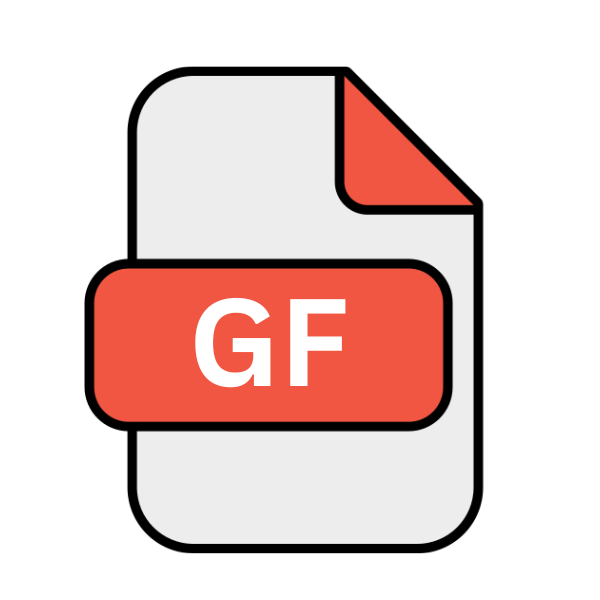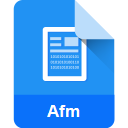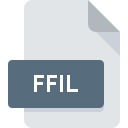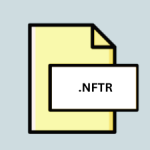.GF File Extension

METAFONT Bitmap File
| Developer | N/A |
| Popularity | |
| Category | Font Files |
| Format | .GF |
| Cross Platform | Update Soon |
What is an GF file?
The .GF file extension is primarily associated with METAFONT, a system devised by Donald Knuth for the creation of high-quality fonts.
METAFONT allows designers to describe characters and symbols with mathematical precision, enabling the generation of bitmap font images (.GF files) based on these descriptions.
These bitmap images serve as the visual representation of fonts and are utilized in various digital applications, including typesetting and graphic design.
More Information.
The history of .GF files are intimately tied to the evolution of digital typography and typesetting technology. With the advent of computers, traditional typesetting methods were gradually replaced by digital alternatives, prompting the need for scalable and versatile fonts.
Donald Knuth’s development of the METAFONT system, along with its associated .GF file format revolutionized font design by introducing mathematical precision and scalability into the process.
Initially conceived as a tool for typesetting scientific and mathematical documents, METAFONT and .GF files have since found applications in various fields, including graphic design, computer programming, and digital publishing.
Origin Of This File.
The origin of .GF files can be traced back to the development of the METAFONT system in the late 1970s by Donald Knuth, a renowned computer scientist and professor emeritus at Stanford University.
Knuth’s objective was to create a system that would enable the creation of aesthetically pleasing and highly customizable fonts for use in his groundbreaking typesetting system, TeX.
As a result, .GF files emerged as the output of METAFONT’s font design process, containing bitmap representations of characters and symbols defined by mathematical parameters.
File Structure Technical Specification.
.GF files are binary files that contain bitmap representations of characters and symbols defined using the METAFONT language.
The structure of .GF files are characterized by a series of instructions and parameters that describe the shape, size, and appearance of each glyph within a font.
These instructions are interpreted by rendering software to generate pixel-based images of characters at different resolutions.
The technical specifications of .GF files may vary depending on the version of the METAFONT system used to create them, as well as the specific parameters chosen by the font designer.
How to Convert the File?
Converting .GF files to other formats can be accomplished using various methods and tools. Here are some guides on how to convert .GF files to more commonly used font formats like TrueType (.TTF) or OpenType (.OTF):
Online Conversion Tools:
- Visit an online conversion website like OnlineFontConverter.com or FreeFileConvert.com.
- Upload your .GF file using the provided interface.
- Select the desired output format (e.g., TrueType or OpenType).
- Initiate the conversion process and download the converted font.
Font Conversion Software:
- Download and install font conversion software such as FontForge, TransType, or FontLab.
- Open the software and import your .GF file.
- Choose the output format (e.g., TrueType or OpenType) from the export options.
- Optionally, configure settings such as hinting or kerning.
- Convert the file and save the converted font to your computer.
Command-Line Tools (for Advanced Users):
- Open a terminal or command prompt.
- Navigate to the directory containing your .GF file using the “cd” command.
- Run the conversion command using a tool like MF2TTF.
- Specify the input .GF file and any desired options.
- Check the directory for the generated TrueType font file.
Advantages And Disadvantages.
Advantage:
- Precision and Scalability: .GF files offer unparalleled precision in font design, allowing designers to specify characters with mathematical accuracy. .GF files can be scaled to any size without loss of quality, making them ideal for both print and digital applications.
- Customizability: The mathematical nature of .GF files enable designers to customize every aspect of a font, from the shape of individual characters to the spacing between letters. This level of customization is particularly valuable in specialized fields such as scientific typesetting and logo design.
- Compatibility: Despite being a proprietary format associated with the METAFONT system, .GF files can be converted to other common font formats such as TrueType (.TTF) or OpenType (.OTF), ensuring compatibility with a wide range of software applications and operating systems.
Disadvantage:
- Complexity: Working with .GF files require a thorough understanding of the METAFONT language and its associated tools, which can be daunting for novice users. Designing fonts with METAFONT may involve a steep learning curve, especially for those accustomed to more user-friendly font editing software.
- Limited Support: While .GF files can be converted to other font formats for broader compatibility, native support for .GF files are limited to a handful of specialized software applications. This lack of widespread support may pose challenges for users who wish to utilize .GF fonts in mainstream design and publishing tools.
- Bitmap Limitations: .GF files are inherently bitmap-based, meaning they lack the scalability and resolution independence of vector-based font formats such as TrueType and OpenType. This limitation can result in suboptimal rendering quality, especially when fonts are displayed at high resolutions or magnifications.
How to Open GF?
Open In Windows
- Use font management software like FontForge or TransType, which supports .GF files.
- Convert the .GF file to a more common font format like TrueType (.TTF) or OpenType (.OTF) using font conversion software.
- After conversion, you can simply double-click the converted font file to install it on your Windows system and use it in various applications.
Open In Linux
- Use font rendering libraries compatible with the METAFONT format, such as MFtrace.
- Convert the .GF file to a supported font format like TrueType (.TTF) or OpenType (.OTF) using command-line conversion tools like FontForge or MF2TTF.
- Once converted, install the font on your Linux system by placing it in the appropriate font directory (e.g., /usr/share/fonts) or using font management utilities.
Open In MAC
- Use font management software like FontForge or TransType, which may offer limited support for .GF files.
- Convert the .GF files to a macOS-compatible font format like TrueType (.TTF) or OpenType (.OTF) using font conversion software.
- Install the converted font on your Mac by double-clicking the font file and following the installation prompts, or by manually placing it in the Fonts folder located in your user’s Library directory.
Open In Android
- Convert the .GF file to a supported font format like TrueType (.TTF) or OpenType (.OTF) using online conversion tools or dedicated font conversion apps available on the Google Play Store.
- After conversion, transfer the converted font file to your Android device.
- Install the font on your Android device by opening the font file and following the installation prompts, or by using a font management app from the Google Play Store.
Open In IOS
- Convert the .GF file to a supported font format like TrueType (.TTF) or OpenType (.OTF) using online conversion tools or dedicated font conversion apps available on the App Store.
- After conversion, transfer the converted font file to your iOS device using cloud storage or file transfer methods.
- Install the font on your iOS device by opening the font file and following the installation prompts, or by using a font management app available on the App Store.
Open in Others
- For other operating systems, follow similar procedures as mentioned above for Windows, Linux, macOS, Android, or iOS, depending on the availability of compatible software and tools.
- If native support for .GF files are lacking, consider converting the files to widely supported font formats like TrueType or OpenType using appropriate conversion methods, then install and use the converted fonts as needed.













